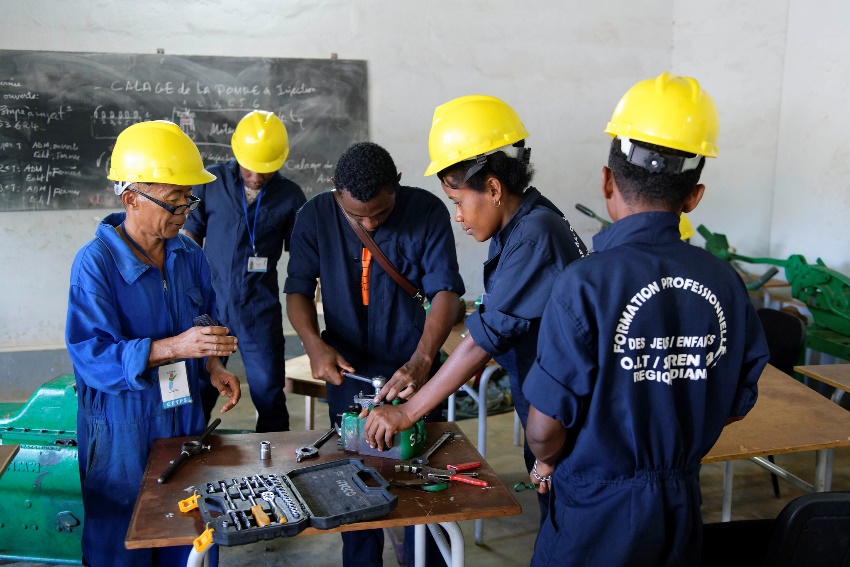Mainstreaming Occupational Safety and Health (OSH) in vocational training programmes.
Mainstreaming Occupational Safety and Health (OSH) in vocational training programmes.
English
ILO
The International Labour Organization is the tripartite U.N. agency that promotes Decent Work through employment, social security, labour standards and social dialogue. Its work on skills development is guided by the conceptual framework on Skills to improve productivity, employment growth, and development agreed in 2008 by representatives of Governments, Employers’ Associations and Workers’ Associations. Research, policy advice, and pilot projects and technical cooperation programmes to apply good practices in different circumstances across its 185 member States aims to boost the employability of workers, the productivity and competitiveness of enterprises, and the inclusiveness of economic growth. The ILO Secretariat in offices in 40 countries works with Ministries of Labour, employers’ organizations, and trade unions to integrate skills development into national and sector development strategies in order to better meet current labour market needs and to prepare for the jobs of the future; to expand access to employment-related training so that youth, persons with disabilities and other vulnerable groups are better able to acquire skills and secure productive and decent work; and to improve the ability of public employment services to provide career guidance, maintain labour exchange services, and deliver active labour market programmes.For more information regarding the ILO’s work on skills and employability go to: http://www.ilo.org/skills/lang--en/index.htm; for ILO/Cinterfor's Knowledge Management Plarform, see: http://www.oitcinterfor.org

Training quality and relevance

Other knowledge products

Forestry and wood production sector
The global Project “Building a Generation of Safe and Healthy Workers -- Safe Youth@Work Project”, executed by the ILO and funded by the US Department of Labor, pursues among its main components: mainstreaming OSH in vocational training programmes, awareness raising of vulnerability of young workers and enhancing the technical capacities of labour inspectors to better identify the occupational risks faced by youth at work.
In this framework, ILO/Cinterfor is responsible for implementing the Project component related to OSH in vocational training in Uruguay and as a learning outcome of the implementation of the Project in the country, this guide was defined with the purpose of being a valuable tool for the entire region.
The objective of this guide is to offer some practical guidelines to teachers to make their work in the field of OSH easier. The guidelines and suggestions that are presented here to trainers and institutions aim at mainstreaming the prevention of risks at work, the protection and the promotion of health into the forestry and wood production sector, while also taking into account the particular features of young participants. The guidelines and suggestions that are here systematized aim at mainstreaming the prevention of risks at work, the protection and the promotion of health into the forestry and wood production sector, while also taking into account the particular features of the target audience: young people who are participating in educational processes.











